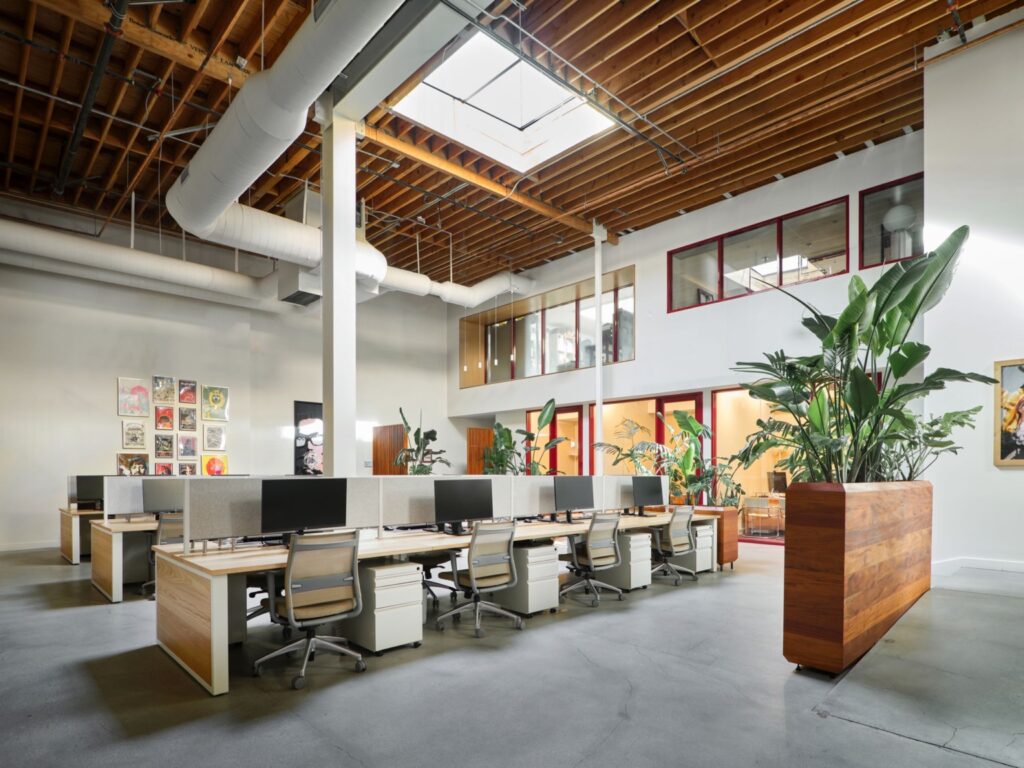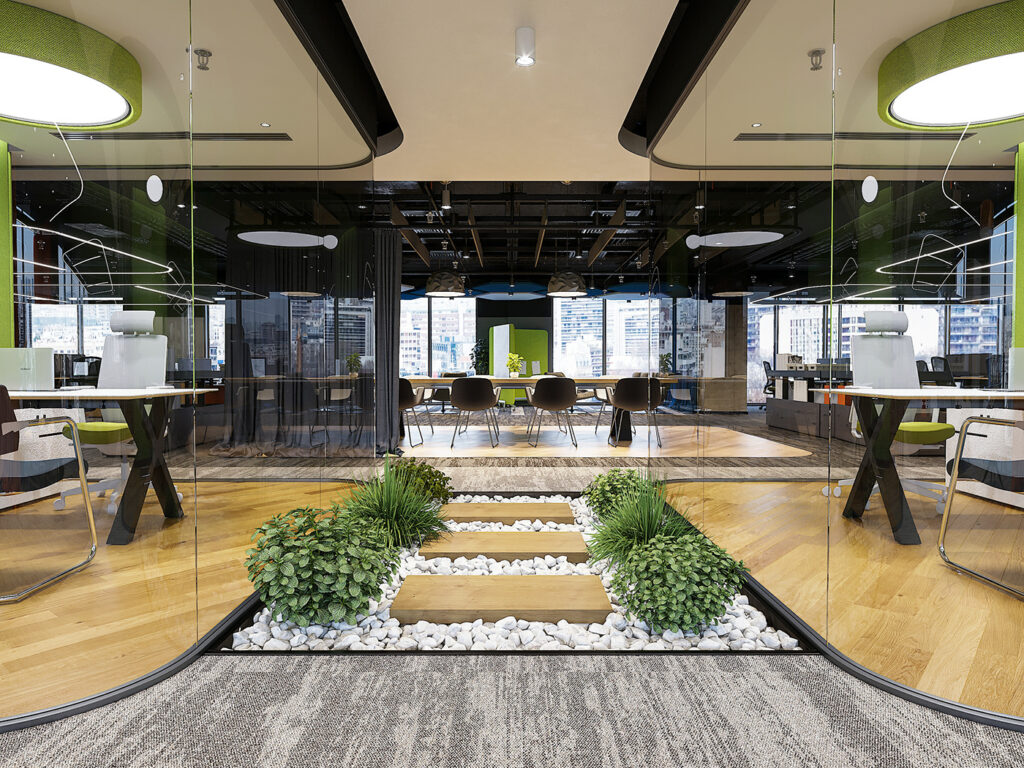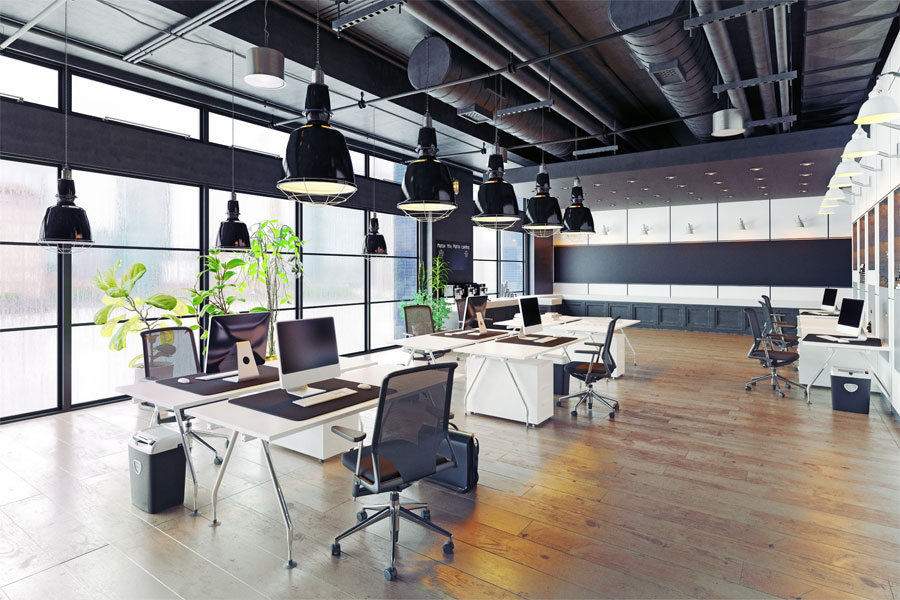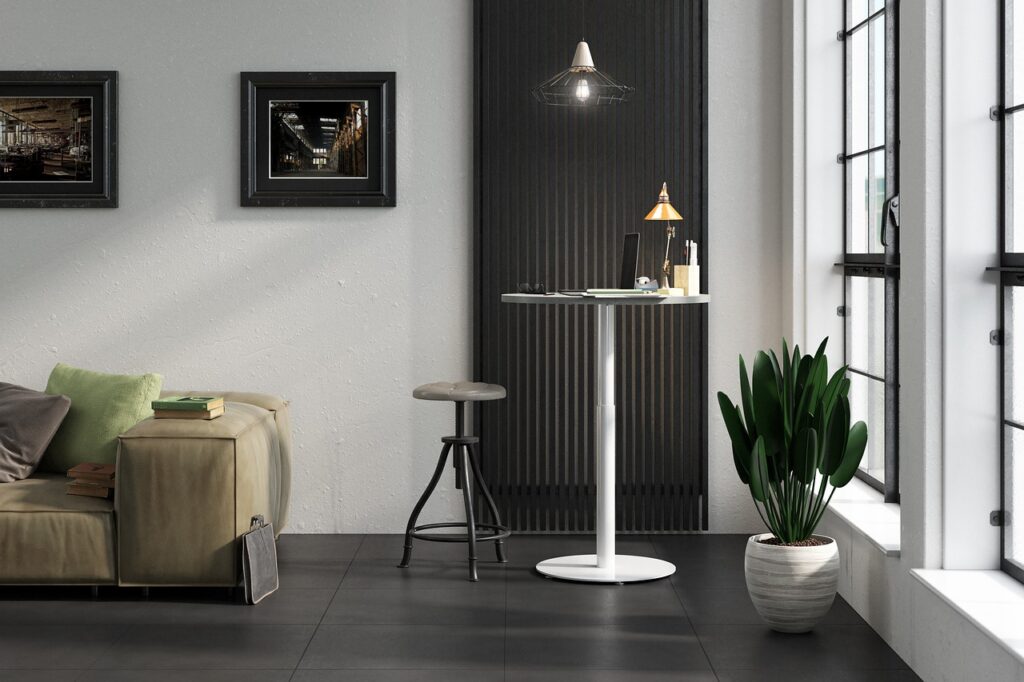Introduction
The world of work is evolving faster than ever, and leading that evolution is Generation Z, the first fully digital-native generation to enter the professional space. By 2030, Gen Z will form more than one-third of the global workforce, bringing with them new values, expectations, and ways of working.
For businesses today, the question is no longer whether to adapt to this new generation, but how quickly. The workplace is no longer defined by desks and meeting rooms alone — it’s an ecosystem that reflects culture, purpose, and innovation. Designing commercial interiors that resonate with Gen Z means creating environments that are technologically advanced, emotionally engaging, and consciously sustainable.
Understanding the Gen Z Workforce
Unlike previous generations, Gen Z has grown up surrounded by technology, instant communication, and a strong awareness of global issues. They prioritise authenticity, flexibility, and sustainability, expecting their work spaces to mirror these values. Traditional office structures often feel restrictive to them, they seek spaces that inspire creativity, encourage collaboration, and align with their personal and professional aspirations.
For Gen Z, the office is not just a place to work; it’s a reflection of the organisation’s identity. A well-designed workspace signals innovation, inclusiveness, and purpose — qualities that attract and retain top young talent.
Technology as the Backbone of Modern Workspaces
Technology is at the core of Gen Z’s professional identity. They expect seamless integration between digital and physical environments. Offices today are moving towards “phygital” experiences — a blend of physical and digital that supports hybrid work models.
Features like IoT-enabled desks, wireless charging stations, smart lighting systems, and AI-driven space optimisation tools are becoming standard. Many forward-thinking offices also include virtual reality zones for immersive collaboration and digital prototyping.
This level of tech integration not only enhances convenience but also strengthens collaboration between remote and in-office teams — a hallmark of the future of workplace design.
Sustainability: A Non-Negotiable Value
If there’s one value that defines Gen Z, it’s sustainability. This generation expects businesses to prioritize environmental responsibility in every aspect, including office interiors.
Modern commercial design now emphasizes biophilic elements, energy-efficient systems, and the use of eco-friendly materials. Workspaces that incorporate green walls, natural light, and air-purifying plants not only reduce carbon footprint but also enhance employee wellness and creativity.
Certifications like LEED (Leadership in Energy and Environmental Design) or IGBC are no longer just badges of honor—they are strategic assets that strengthen brand reputation among eco-conscious professionals.
For companies designing for the future, a sustainable interior strategy is essential for both talent attraction and long-term operational efficiency.
Flexibility and Adaptability in Spatial Design
Gen Z thrives on change, and their workplaces must too. The traditional cubicle layout has given way to fluid, modular environments that can transform based on task or team.
Flexible design solutions include movable partitions, multi-use furniture, and zones that serve different functions throughout the day — a meeting area in the morning can become a casual collaboration hub by afternoon.
This adaptability supports both hybrid work models and evolving organizational needs. In essence, flexible design creates a living workspace that grows and changes with the company, making it future-proof.
Wellness and Human Experience
Gen Z places immense value on mental and physical well-being, viewing them as non-negotiable components of productivity. As a result, wellness-centric office design has moved to the forefront of commercial interiors.
Workplaces are now integrating natural lighting, ergonomic furniture, sound-absorbing materials, and even mindfulness zones. Some forward-looking offices incorporate nap pods, indoor fitness spaces, and quiet corners for meditation or focus.
The emphasis is shifting from designing for efficiency to designing for human experience. The idea is simple: when people feel well, they perform well.
Culture, Creativity, and the Power of Expression
Beyond technology and sustainability, Gen Z values creativity and authenticity. They want workplaces that encourage self-expression and reflect individuality. Offices with bold color palettes, local art installations, and customizable workspaces resonate with this need.
Such environments don’t just look visually dynamic—they create emotional engagement. When employees feel a sense of ownership over their environment, they naturally build a deeper connection to their organization’s culture and mission.
This approach transforms interiors from static structures into living reflections of company culture—a visual narrative that employees proudly share, often amplifying the brand’s identity across social media.
Case Example: A Future-Ready Workspace in Noida
A tech startup in Noida recently partnered with AirBrick Infra to reimagine its 10,000 sq. ft. workspace for a Gen Z-heavy workforce. The redesign focused on flexibility, creativity, and sustainability.
Features like modular furniture, circadian lighting, and employee art walls turned the office into an engaging, adaptive environment. Within six months of completion, the company recorded a 35% rise in employee engagement and a notable improvement in employer branding — driven largely by employees sharing photos of their workspace online.
This example showcases how designing for Gen Z isn’t just about aesthetics—it’s about building culture and engagement through space.
Read more here
Emerging Trends in Gen Z-Oriented Office Design
The landscape of Gen Z workplace design continues to evolve. Offices in 2025 and beyond will increasingly emphasize:
- Phygital collaboration — blending physical and virtual spaces to enable real-time teamwork.
- Community-driven layouts — reimagining cafeterias and lounges as hubs for networking and cross-departmental exchange.
- Personalization technology — allowing employees to control their lighting, temperature, and seating preferences through mobile apps.
- Gamified environments — merging work and play to foster innovation, motivation, and connection.
Each of these trends reflects one truth: the modern office is an experience platform, not just a physical location.
Conclusion
Designing for Gen Z goes beyond adapting aesthetics—it’s about understanding a generation that demands meaning, connection, and innovation. A Gen Z-ready commercial interior seamlessly combines technology, sustainability, flexibility, and culture into one cohesive ecosystem.
Organizations that embrace this approach will not only attract young talent but will also position themselves as leaders in the future of workplace design.
At AirBrick Infra, we help businesses create such spaces—commercial interiors that are intelligent, adaptive, and deeply human. Our design philosophy revolves around building work environments that inspire creativity, promote wellness, and evolve with the workforce of tomorrow.
Get in touch with AirBrick Infra from here.





